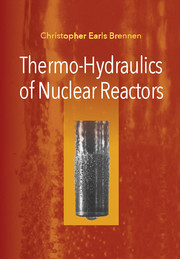1 - Introduction
Published online by Cambridge University Press: 05 April 2016
Summary
Background and Context
Beginning in the early 1950s, the nuclear power industry in the United States grew to become second only to coal in its electrical generation capacity. By 1990, there were 111 commercial nuclear power plants with a combined capacity of 99,000 MW, representing about 19 percent of the nation's electric power. Nuclear power production in the United States was then 530 × 109 kWh, much more than in France and Japan combined, although these two countries were among the nations most reliant on nuclear power. France produced 77 percent of its electricity by nuclear power; in West Germany and Japan, the percentages were 33 percent and 26 percent, respectively. However, in the United States, no new nuclear plants were ordered after 1978, and the expansion of the U.S. commercial nuclear power industry ceased shortly thereafter. Other countries saw a similar drastic decline in the growth of nuclear power capacity.
The reasons for this abrupt transition are several. First, the rate of growth of demand for electric power was less than expected. Second, the capital costs associated with new nuclear power plants rose dramatically in the 1970s and 1980s, in part because of more stringent regulatory activity. And third, public opposition to nuclear power also rose substantially in the aftermath of the Three Mile Island accident (see Section 7.5.1) in 1979, a reaction that was further amplified by the Chernobyl accident in 1986 (see Section 7.5.2). These accidents greatly heightened the public fear of nuclear power plants based on three major concerns, two reasonable and one unreasonable. The unreasonable concern was that a nuclear generating plant might explode like a nuclear weapon, an event that can be dismissed on fundamental physical grounds (see, e.g., Nero 1979). However, the other two concerns that continue to have validity are the fear of the release of harmful radioactive material and the concern over the storage of nuclear waste. While Chernobyl rightly increased the concern over radioactive release, the improvements introduced as a result of the lessons learned from the nuclear accidents over the past half-century (see Sections 7.5 and 7.6) have greatly reduced the risk of such events. Specifically, it is now recognized that, in the past, a lack of standardization in the design and operation of nuclear power plants significantly impaired their safety margins and that worldwide cooperation, oversight, and standardization will radically improve safety margins in the future.
- Type
- Chapter
- Information
- Thermo-Hydraulics of Nuclear Reactors , pp. 1 - 4Publisher: Cambridge University PressPrint publication year: 2016



